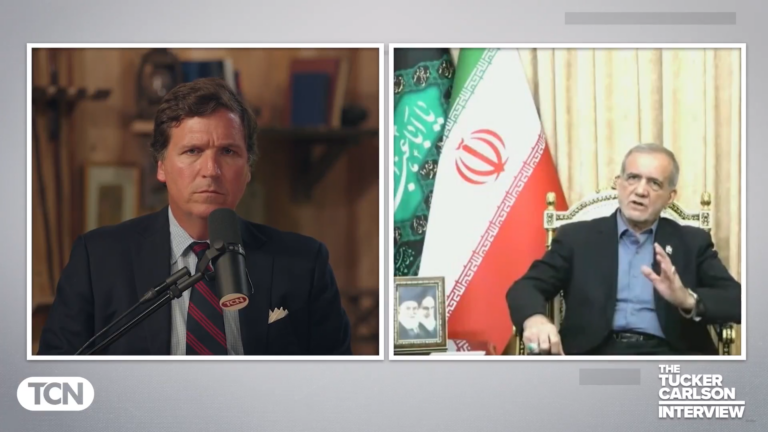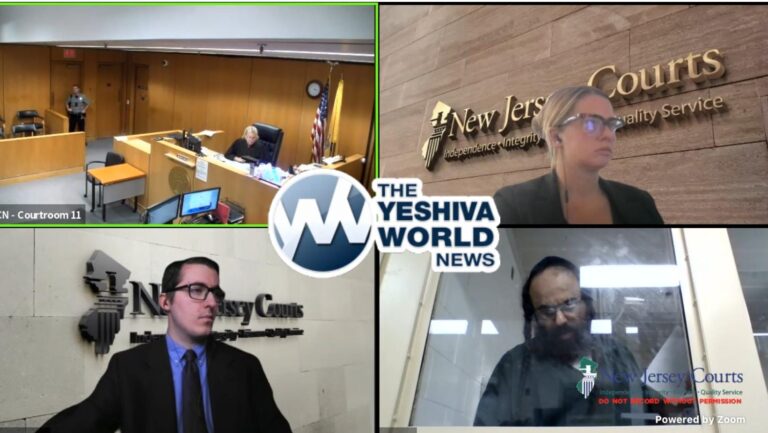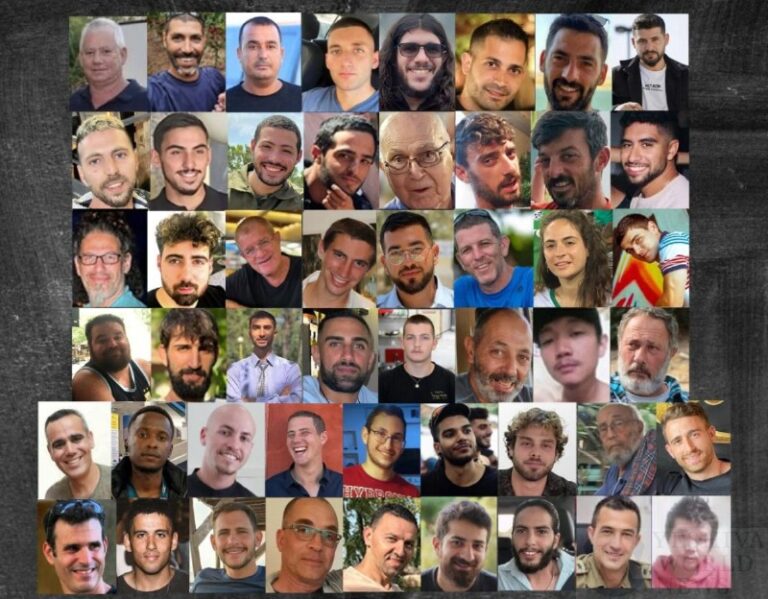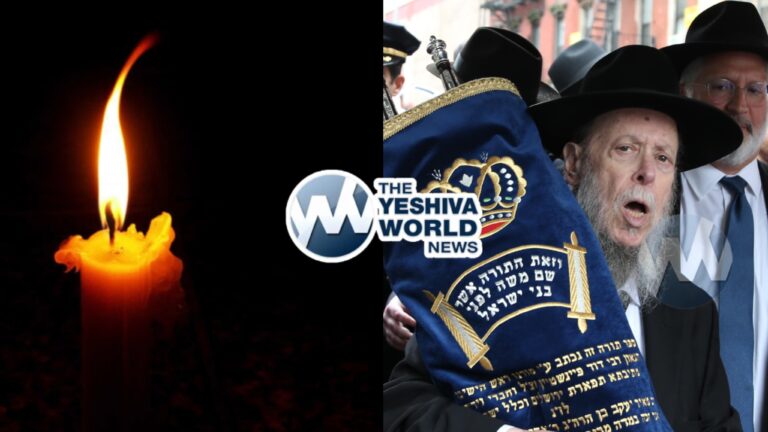By Rabbi Yosef Levinson
Think of Purim, and one of the first things that come to mind is the minhag (custom) of masquerading. We disguise ourselves and hide our faces behind a mask. This reminds us that our salvation on Purim came about through a neis nistar, a hidden miracle. Hashem did not alter the natural order of things. He did not split the sea or cause a single jug of oil to burn for eight days. After witnessing a chain of seemingly chance occurrences, the Jewish people realized that Hashem was with them all along, coordinating events for their benefit.
When we see someone wearing a mask, our curiosity is piqued. Just who is it behind that mask? We concentrate and try to guess his identity. This is one of the lessons of Purim, as the Gemara (Chullin 139b) asks: “Where is there an allusion to Esther in the Torah?” The Gemara answers: “Ve’anochi hasteir astir panai– And I shall surely hide My face” (Devarim 31:18). If we search beneath the surface, we will find the Yad Hashem – the Divine Hand – throughout the Purim story. We must then bring this lesson home and see Hashem’s hashgacha, His Providence, in our own lives. As we shall see, however, the Megillah teaches us that there is even more in this world for us to unmask.
We are all familiar with the story of the Megillah. Haman planned to kill all the Jews, and he offered King Achashveirosh a huge gift to the king’s treasury to win his consent. Achashveirosh told Haman to keep his money and that he may do as he pleases with the Jews. The events that follow are well known to the reader. Let us advance to the second banquet for Achashveirosh and Haman. When Esther revealed that she was a Jewess and that Haman had planned to kill her and her people, the king was furious. To add insult to injury, Charvona immediately informed Achashveirosh that Haman had erected a gallows fifty cubits high to hang Mordechai, who had saved the king from assassination. This was the final straw. The king ordered Haman executed on those very gallows.
Although their archenemy was now dead, the Jews were still not out of danger. Haman’s decree was still in effect, and his malicious plans could go ahead without obstruction. Esther and Mordechai beseeched the king to rescind the dreadful order against the Jews, to which Achashveirosh answered that a royal edict cannot be revoked once issued. He allowed, however, a new decree to be issued, which Esther and Mordechai could word as they saw fit, and he would ratify. What did Mordechai write? The Jews were permitted to defend themselves and to slay their adversaries, and to destroy all those who threatened them.
This is very puzzling. Even after this new edict was issued, it would appear that the Jewish people’s enemies were still permitted to exterminate them. Haman’s original edict, horrific as it was, had not prohibited the Jews from defending themselves.
Yet, after the royal couriers delivered the new message, the Megillah relates (8:16): “The Jews had light, happiness joy and honor.” Why were they so ecstatic? How could they be so confident that they would prevail over their many enemies after they were so sure they were doomed to defeat?
Removal of the Ring
The Gemara (Megillah 14a) states, “Rabbi Abba bar Kahana said, ‘The removal of (Achashveirosh’s) signet ring which he had given to Haman (signifying his consent to Haman’s evil decree) was greater than the forty-eight Nevi’im (prophets) and seven Nevios (prophetesses) who had prophesied to Israel. For they were all unable to stir the Jews to repent, whereas the removal of the signet ring did stir the Jews to repent.’”
Rabbi Abba bar Kahana’s message is obvious. The people knew that the Nevi’im who came to rebuke them were repeating what they had heard directly from Hashem, nevertheless they were not inspired to repent.[1] In the time of Haman, however, the Jews saw the dreadful decree in writing and his malicious intentions were read publicly for all to hear. What can stir a nation to repentance more than seeing their own death sentence signed and sealed?
Yet, the Gemara makes no mention of the decree itself. The Gemara only discusses the hasaras hataba’as, the handing over of the signet ring. What significance does hasaras hataba’as have, and why would that awaken the people to repent?
Every king has a cabinet of ministers to assist him in ruling the country. The ministers do research and advise the king. The king issues his decisions. It is then the cabinet’s task to carry out their ruler’s wishes. At all times, the king is in command. If the king would commission one of his ministers to carry out a royal edict, there would be no reason to transfer his signet ring to the minister. The ring is a symbol of authority. The minister is only an emissary, performing his duties. The king remains in charge.
Achashveirosh’s act of giving his ring to Haman was a declaration that he was no longer ruler over the Jews. Achashveirosh was ridding himself of the Jewish problem. Haman was now in command, to do as he saw fit (see Rashi 3:10; Maharal, Or Chadash).
Although Hashem’s name is not mentioned in the Megillah, our Sages, in various places, the Midrash[2] explains that whenever the passuk says “HaMelech, the King,” without mentioning Achashveirosh by name, it is an allusion to Hashem – Malko shel Olam, the King of the Universe. In these places, Achashveirosh, the king of this world was mirroring the actions of Hashem the Melech Malchei HaMelachim, the King of Kings, in the Heavens (see Maharal, Or Chadash). Let us now revisit the passuk: “And the King removed His signet ring and gave it to Haman.” It was the Malko shel Olam who removed the ring, and this was what frightened the nation to sincere repentance more than all the prophecies of the Nevi’im.
No Longer Directly Involved
The Bnei Yisrael enjoy Hashgacha Prattis, Divine Intervention. Hashem plays a direct role in the lives of the Jewish People, both on a national and individual level. When, over the course of time, the Jewish Nation sinned, the Nevi’im rebuked them to mend their ways. If the people remained complacent, the Nevi’im warned of dire consequences. Foreign armies would attack and plunder their possessions; famine, disease and plague would strike the people. This, however, did not arouse them from their slumber. For who was punishing them? Hashem! Hashem is our Father, and a father tempers his punishment with mercy. More importantly, if Hashem would cause them to suffer, that meant He still cared for them. They were still His children, under the guidance of His ever-watchful eye.
In the times of Purim, however, Hashem turned away from the people. He removed His ring and gave it to the wicked Haman. It was, kaveyachol (so to speak), as if they were no longer being guided by their loving Father in Heaven.[3] Natural events and circumstances would decide the fate of the Jewish people. This is why the ring was transferred to Haman, a descendant of Amalek. Amalek personifies teva (nature) and mikreh (happenstance); they aim to deny Hashem’s existence in this world.[4]
This is what stirred the Jews to teshuvah. It was as if they were being cast out of their Father’s house. They felt that He was no longer concerned for them, and that terrified them. At this frightening time, the people prayed and repented. They realized that they were dependent solely on Hashem. Their efforts bore fruit and Haman was executed. They saw that after they returned and put their trust in Hashem, He began to carefully look after them again. Although Achashveirosh did not rescind Haman’s ominous decree, he did permit them to issue a new edict. Yes – on paper nothing changed. The enemies of the Jews could still kill and destroy the Jewish Nation, and the Jewish people could fight back and kill their adversaries as before. Now, however, Hashem had reconciled with Bnei Yisrael and they understood the wording of the second decree as another Heavenly sign that Hashem would fight their cause – they could slay all those that rose up against them. Furthermore, this edict was published after the king took the ring that he had given to Haman and handed it to Mordechai (Esther 8:2). Mordechai was now in charge of the Jews.
This passuk also makes no mention of Achashveirosh when referring to the king. Once again, the King was Hashem. He removed the ring from the hand of Haman, who personified mikreh, and gave it to Mordechai Hatzaddik, who exemplified trust in Hashem in all circumstances. If the people would follow Mordechai, they would prevail, as it says (Chavakuk 2:4), “Tzaddik be’emunaso yichyeh – The righteous person shall live through his faith.”[5] It did not matter that 127 nations were preparing to attack them. “Eileh varechev va’eileh va’susim, va’anachnu b’sheim Hashem Elokeinu nazkir. Heima karu v’nafalu va’anachnu kamnu vanisodad. Some come with chariots and some with horses, but we call out in the Name of Hashem. They slumped and fell, but we arose and were invigorated” (Tehillim 20:8-9). “Surely this was cause for celebration. And rejoice they did: “The Jews had light and gladness, and joy and honor” (Esther 8:16).
A Time of Spiritual Revival
This was not only a time of physical joy; it was also a time of spiritual revival. The Gemara (Megillah 16b) interprets this verse, “The Jews had light and gladness, and joy and honor”, as follows: “Light refers to Torah… gladness is Yom Tov… joy refers to millah, … and honor is tefillin.” The climax of this renewed interest in Torah occurred after the Jews had conquered their enemies. After their stunning victory, they accepted the Torah anew, as they had at Sinai.” ‘Kiymu v’kiblu– the Jews established and accepted’ (Esther 9:27). They established [in the times of Purim] what they had accepted already [at Har Sinai].” Rashi (Shabbos 88a) explains that it was due to the love for the miracle that Hashem performed for them then that they re-accepted the Torah.
How did Mordechai and Esther’s decree cause a Torah renaissance, and what was so special about the Jews’ victory that they re-accepted the Torah because of this miracle? There were countless miracles and salvations that were performed from the time of Kabbalas HaTorah (receiving the Torah) until the Purim episode. What aroused their love on Purim that they felt this great devotion and commitment to the Torah? Interestingly, Rashi does not say that they accepted the Torah because of love of Hashem, for His having performed a miracle; rather it was due to love of the miracle itself. What does Rashi mean?
In comparison to the other miracles performed on behalf of Bnei Yisrael, Purim is unique. Factually, the decree proclaiming the Jews’ right to defend themselves was no different from the original edict. Yet they understood that this new declaration signaled their redemption. It drew into focus the significance of all the events that had transpired in order to reach this point. Specifically, Vashti was deposed because she had aroused Achashveirosh’s anger. Subsequently, Esther was found to be the most beautiful maiden in Achashveirosh’s kingdom, and he selected her as his new queen. Mordechai happened to overhear Bigsan and Seresh plotting to assassinate the king and foiled their plans. His deed was recorded in the royal ledger, then totally forgotten. Haman built a gallows to hang his archenemy, Mordechai.
In retrospect, we see how these events were Divinely orchestrated. Vashti was removed to make way for Esther. Esther would now be able to beseech Achashveirosh and save her people when the need would arise five years hence. Furthermore, the belated revelation of Mordechai’s role in foiling the assassination plot, resurfaced at a most opportune time and played a significant part in Haman’s downfall and the Jewish people’s salvation.
The fact that Haman built a gallows to hang Mordechai, who had saved the king’s life, showed Achashveirosh that Haman was not concerned in the least with what was in the king’s best interest. Haman had his own agenda, which he would strive to carry out even if it proved detrimental to the government. Also, the gallows was prepared for a swift execution, before the fickle ruler could change his mind.
Appreciation in Retrospect
Now that they understood the true meaning of these events, the Bnei Yisrael related to these past occurrences as if they were happening in the present. This is why they had a special affinity for the miracle of Purim. Throughout their history, Bnei Yisrael had witnessed many a miracle. Hashem had delivered them from certain death on numerous occasions. No doubt, in their excitement and joy over these miracles, they approached the Torah and mitzvos with new-found enthusiasm. Also, in all likelihood, they resolved to be more diligent with their learning, in appreciation for all that Hashem had done for them. They still, however, did not “re-accept” the Torah. Bnei Yisrael learnt the Torah and were well versed in its laws as well as observing the mitzvos. How could they utter a new kabbalah (acceptance), if they did not receive any mitzvos or laws that they had never learnt before? Whatever they would learn would only be a review of lessons from the past.
The Purim miracle taught Bnei Yisrael to re-evaluate well-established ideas and beliefs. If they could uncover new purpose in the events that had transpired in their daily lives, and if they could relive these incidents with added insight, then they could surely discover new understandings and approaches to the Torah that they had already learnt. If Bnei Yisrael would look beneath the surface, they would find many new meanings that remained hidden until then. They could then see Torah in a new light.
This is the meaning of the Gemara. The passuk does not say that the Jews had Torah, Yom Tov, millah, and tefillin; rather, the passuk relates that they had light, gladness and honor. Bnei Yisrael already kept the Torah and mitzvos. They were lacking the light and joy that emanates from the Torah and mitzvos. After Haman was executed and a new decree was issued, the Bnei Yisrael began to perceive the light of the Torah through the new interpretations that they uncovered. Through discovering new purpose to fulfilling the Torah’s precepts, they began experiencing the joy of the mitzvos.[6]
These feelings continued to grow until the Bnei Yisrael’s enemies were defeated. Then, they actually experienced Hashem’s hidden miracles. They witnessed the slaying of all those who had planned to destroy them. Hashem redeemed them without altering the natural order of the world; there were no innovations. Kiymu v’kiblu: once again Bnei Yisrael shouted “na’aseh v’nishma, we will do and we will listen.”
When Freshness Cures Complacency
This is another very important lesson for us. Familiarity breeds complacency. We assume that since we have learnt the Megillah so many times, we fully understand the Purim story and there is no need for us to re-examine it. But, as we have demonstrated, merely scratching at the surface of the Megillah uncovers new treasures. The same is true regarding much of what we were taught in our youth. R’ Simcha Zissel Ziv, the Alter of Kelm, writes (Chochmah U’Mussar 1:83) that as we grow older and mature intellectually, we learn new subjects and mitzvos with our advanced abilities. Yet, we still approach the mitzvos and learning of our youth as we did then. As the Gemara (Yoma 29a) says “Kasha atika meichadeta – it is harder to learn something old than something new.”
The Alter says that this is why Chazal taught (see Rashi, Devarim 6:6, 11:13), “B’chol yom yihiyeh b’einecha k’ilu hayom nitnah – We should constantly view the Torah as if it were being given today.”
No matter how many times we have learnt something or performed a particular mitzvah, we should try to approach it as if it were the first time we are learning or observing it. Often, when we truly apply ourselves, we raise difficulties and wonder why we never asked these questions before. When we view the Torah and mitzvos as something new, we too will come away with a wealth of insights, and in that sense, it is a new Gemara or a new mitzvah.[7]
When we see our children masquerading on Purim, let us remember that we must search and find how the Yad Hashem constantly affects our lives. And if we examine it closely, we will also see how we benefit today from our past experiences. May we also always view the d’var Hashem, the Torah, as something new. Let us explore and strive to unmask the Megilla, deepen our mastery of Torah, and make our fulfillment of mitzvos more meaningful.
Parshas Zachor: A Tale of Two Kings
‘’Remember what Amalek did to you’’ (Devarim 25:17).
There was once a nation that had a treacherous foe. They anointed a new king who mobilized the people to attack the enemy. This new king led them to a stunning victory, killing every man, woman and child. The sole survivor was the defeated king who was captured alive. Almost all their property was destroyed except for the best of the spoils which was claimed by the victorious army. How was the king rewarded for this remarkable military feat? What honor did he receive? He was rewarded by being dethroned!
The nation was the Jewish people, the king was Shaul, and the villains Amalek. Shmuel Hanavi admonished Shaul for not heeding Hashem’s command and allowing the king of Amalek, Agag, to live. Furthermore, Shaul permitted his soldiers to take the choicest animals instead of destroying all of the enemy’s possessions. On account of the apparently minor indiscretion concerning Agag, he was considered unfit to reign even though he had destroyed an entire nation. Why did he merit such a profound punishment?
Shaul took compassion on Agag. Chazal say (Yoma 22b), Shaul reasoned that if the Torah requires atonement for the murder of one individual, even if the murderer is unknown (See “eglah arufah”, Devarim 21:1 – 9), how much more so should atonement be necessary when many lives are lost. It was for this misguided compassion that Shaul was punished, for he was told ‘’Do not be overly righteous’’ (Koheles 7:16).
If the Torah commands us to annihilate Amalek, that means they are totally evil; no benefit can come from them. Amalek’s attack against the Jewish nation was ultimately a battle with Hashem. They had nothing to gain by engaging us in battle, nor did we pose any threat to their security. Their pure aim was to eradicate holiness from the world because holiness was the antithesis of all they represented. Shaul Hamelech surely recalled what Amalek had done, but that memory did not burn strongly enough within him. We are a merciful nation, so much so, that a person’s Jewish lineage is called into question if they lack compassion (see Yevamos 786). Nevertheless, the Torah demands that we hate and despise Amalek. We cannot let our rage subside until every last Amalekite is killed. Every year, the mitzvah to remember what Amalek did, is not just a reminder of their despicable acts of long ago, rather it is to rekindle our hatred and rage towards them. The episode with Shaul reminds us that there is no place for compassion when it comes to Amalek. Through Shaul’s mercy, Agag was able to sire a child whose descendant was none other than Haman, who threatened to destroy the Jewish people until they were miraculously rescued.
Perhaps this can explain why Hashem told Moshe ‘’Write this in the Book and recite it in the ears of Yehoshua’’ (Shemos 17:14). The Ramban explains that the “Book” is a reference to Parshas Zachor in Sefer Devarim. Why then did Hashem issue this command to Moshe in Sefer Shemos? The Book of Devarim was not written until forty years later. Also why did he have to recite it in Yehoshua’s ears? The Netziv explains that even though the entire Torah was written, Hashem wanted to impress upon us the importance of remembering the evil motives that provoked Amalek. The written word was simply not powerful enough to convey that emotion. Therefore says Hashem, “recite it in the ears of Yehoshua”, let him hear the rage and passion in your voice, then let him teach it to the next generation.
One who questions the necessity of expressing cruelty should learn from Shaul. While Shaul was merciful to Agag, on a different occasion he acted with extreme cruelty. When David ran away from Shaul, he sought help from Nov, a city of Kohanim. They did not realize David was a fugitive and gave him food and drink. In his paranoia, Shaul thought that they had deliberately conspired against him, so he had them all executed. Shaul was reprimanded – ‘’Do not be overly wicked’’ (Koheles 7:17). Different situations call for different middos. Misplaced compassion will ultimately lead to misplaced cruelty. This is a common phenomenon today. Those who preach tolerance of perverted lifestyles or towards enemies of our people, show no tolerance or compassion for their brethren who disagree with their views.
May we merit to fulfill the mitzvah of destroying Amalek speedily in our days.
Parshas Parah: Statute of Limitations
Parshas Parah discusses the mitzvah of parah aduma, the red heifer. We are commanded to slaughter and burn the para aduma. Afterwards the ashes are gathered, ready to be mixed with mayim chaim, spring water, to sprinkle and purify one who came into contact with a corpse, tumas hameis. In introducing this mitzvah, the passuk is expressed in an unusual way: “Zos chukas HaTorah” – This is the statute of the Torah (Bamidbar 19:2). The Or HaChaim wonders why the passuk doesn’t use the more appropriate phrase, zos chukas hataharah, purity, or hatemeiah, impurity.
He answers that when one observes a mitzva that he understands, it does not necessarily reveal that he is an oved Hashem, a servant of Hashem. If, however, one fulfills a mitzvah, of which the meaning is not clear, and he still observes it in all its details, this indicates that he is an oved Hashem. Parah adumah is the quintessential chok. More than any other mitzvah, we cannot fathom its meaning. The Sefer HaChinuch explains (Mitzvah 397) that the main difficulty with para aduma is the law that those involved in its preparations contract tumah, yet the parah adumah purifies one who is tamei. How can something which purifies, be the source of tumah? Therefore the passuk states “Zos chukas HaTorah”- This is the statute of the Torah, implying that one who observes this mitzvah, is regarded as having fulfilled the entire Torah. The Or HaChaim concludes that perhaps this was the reason why Hashem transmitted this mitzvah to us as a chok.
In his closing remarks, the Or HaChaim alludes to an important lesson which will lead us to another answer to his question. Rashi comments that the yetzer hara and the nations of the world mock us, saying – what reason is there for this mitzvah? Therefore the Torah states that parah adumah is a chok – one does not have the right to question it.
Rabbi Yerucham Levovitz zt”l, the Mirrer Mashgiach, notes that this does not mean that there are no reasons for this mitzvah, rather we lack the capacity to comprehend the rationale for para aduma. The wisest of men said concerning parah adumah, “I said I will become wise, but it is beyond me.” (Koheles 7:23). Chazal explain that Shlomo Hamelech toiled to comprehend this mitzva, but admitted that he could not. Shlomo realized that there is no deeper area of wisdom than para aduma.
The Or HaChaim said that Hashem chose to give this mitzvah in this fashion. The Torah is the Davar Hashem. HaKadosh Baruch istachel B’Arrassa u’bara alma – Hashem looked into the Torah and created the world. The Torah is the blueprint of Creation. That we have the capabilities to understand the other mitzvos is not because they are more logical, the Torah was not given because of these reasons. On the contrary, Hashem shaped our minds and revealed these areas of the Torah to us. In reality these areas are also beyond our grasp. We learn this from parah adumah. Hashem left this mitzva in its original form. Therefore the passuk states – Zos chukas HaTorah. This mitzvah reveals that the entire Torah is a chok. Parah adumah is the statute of limitations; it reveals our limitations of comprehending the depth and hidden meanings of the Torah.
Although reasons are given for many of the mitzvos, we must realize that the mitzvos are not dependent on these reasons (see Gur Aryeh Bamidbar 19:2). The Hebrew word for reason ‘taam’, also means taste. The purpose of these reasons is to make the mitzvos “palatable”. They enhance our appreciation of the mitzvos and drew us closer to Hashem (see Pirkei Torah Vayikra 1:9). As was mentioned above, the Torah preceded creation. The mitzvos were already written before the reasons were in the realm of possibility.
Later in the parshah of parah adumah, the passuk states – “Zos HaTorah adam ki yamus b’ohel…” – This is the law of one who dies in a tent…. The Sages expand the verse as follows: the words of Torah are only retained by one who kills himself over them (Berachos 63b).
It is fitting that the Torah included this lesson here. From parah adumah we learn that Torah is beyond human capabilities, it is purely spiritual. The Maharal explains that man who is materialistic cannot fathom Torah. Man must drive out this drive for materialism and only then can Torah enter and remain a part of him.
The Chafetz Chaim explains that Chazal are also advising us concerning how to motivate ourselves to learn. There was once a wealthy businessman who was constantly involved in his business and had no time to learn. He barely even went to Shul. He was getting on in years and realized that he was not prepared for the next world. How would he defend himself on the Day of Judgment? He started to be meticulous with his shul attendance. He then began to learn. One morning he learned after davening for a few hours. His wife complained that there were many customers waiting for him. The next day he came home even later. His wife accused him of destroying his business and losing his customers. The man responded that if he had died, what would she have done then?
There are many pressing needs, we have to earn a livelihood, give a hand at home. But for some time during the day, one should be ‘dead to the world’. When one leaves this world, there are no more phone calls, no more bills to pay. Let us utilize the time now while we still can, before our statute of limitations runs out.
Parshas HaChodesh: Masters of Time
Sanctifying the new moon and establishing the calendar is the first mitzvah that Bnei Yisroel were commanded to observe as a nation. In fact, Rashi’s opening remark in his commentary on the Torah is that the Torah should have begun with this mitzvah instead of Maaseh Bereishis, the story of creation. Since Hashem created the world so that we may observe His mitzvos, it would have been appropriate to start here.
The importance of this mitzvah cannot be emphasized enough. If the new moon was not declared then the calendar would not function. We would then not be able to celebrate the Yomim Tovim, which commemorate the foundational events in the history of our people.
There is additional significance to Kiddush HaChodesh. The Seforno interprets the verse (Shemos 12:2), “This month shall be for you the beginning of the months…” literally. The Jewish people had been enslaved by the Egyptians and their time belonged to their masters. Now they were going free. Their time would be their own. “This month shall be for you!” R’ Gedalyah Shorr explains an even deeper message contained in these words of the Seforno.
The Sanhedrin were given jurisdiction over establishing the calendar. They could delay the sanctification of the new month and declare a leap year at their discretion. Postponing or advancing Rosh Chodesh and lengthening the year alters when the Yomim Tovim are celebrated. This is why there is a difference between the beracha of Kedushas hayom (the berachah that expresses the holiness of the day) for Shabbos and Yom Tov. On Shabbos we recite Mikadeish HaShabbos, who sanctifies the Shabbos, while on Yom Tov we conclude with Mikadeish Yisrael V’hazmanim, who sanctifies Israel and the festive seasons. Shabbos is always the seventh day. It’s kedushah, sanctity, is fixed in time. However Yom Tov cannot be determined until the Beis Din announces the new moon. It is dependent on the kedushah of the Jewish nation. And the Beis Din’s calculations and decisions affect more than just when the festivals are celebrated. If the Beis Din delays the declaration of Rosh Chodesh or institutes a leap year, natural cycles which are regulated by the passage of time will fall into line with the month and year as they have been declared even though this will be out of synchrony with the actual time (see Yerushalmi, Kesubos 1:2; Shach, Yoreh Deah 189:13). We see then that those whose lives are guided by the Torah have been given mastery over nature. This is to emphasize that the purpose of creation is the Torah and its observance. Perhaps the mitzvah of Kiddush HaChodesh was given first to underline this message, to stress that nature is subservient to Torah and not vice-versa.
There is another lesson that can be learned from this mitzvah. The Hebrew word for month is Chodesh, the root of which means new. Every Rosh Chodesh, new month, is a time for reflection and an opportunity to begin anew. Surely if we are able to control time and alter the natural course of events, we can garner the strength necessary to defeat our Yetzer hora and conquer undesirable aspects of our own nature.
The moon itself can also give chizuk (encouragement). At the end of the month, the moon has waned to nothingness. Yet precisely as it disappears, it begins to rejuvenate. So too, when we are down, we still have the capacity to restore our potential. Our aveiros themselves can propel us upwards to reach even greater heights. This we can also learn from the moon. At the beginning of creation, the sun and the moon were equals. Not happy to share the ‘limelight’, the moon complained. As a result the moon’s light was greatly diminished. Moreover, the moon’s full radiance would be seen only momentarily in the monthly cycle of waxing and waning. However, as the Toras Chaim notes, it is precisely because of these cycles that we are able to use the moon to calculate the calendar. The diminution of the moon’s physical light ultimately led to its elevation in status as an essential component of Torah observance. The same applies to us. We might sometimes feel that our personal “light” has faded. Yet if we yearn to improve and indeed begin to make amends for past wrongs, our aveiros become the vehicles for rekindling a more meaningful light and in this way, they actually become mitzvos.
[1] There were definitely times when the Nevi’im motivated the Jews to repent, writes the Sifsei Chachamim. The teshuvah that that was inspired by the removal of Achashveirosh’s ring, however, was unparalleled in our history.
[2] Esther Rabbah 3:10; Midrash Abba Gurion §1;Yalkut Shimoni §1051, 1057; Zohar, Rei’a Meihimna, Behar (defus yashan 109a).
[3] See Ohr Gedalyahu, Mo’adim, p. 44; see also Ramban and Rabbeinu Bachya to Bereishis 18:19
[4] This punishment was midda k’negged midda, in direct relation to the sin of that generation. They participated in Achashverosh’s royal banquet. Although this banquet was no place for a Jew, they argued that they needed to maintain good relations with the king. By ingratiating themselves to Achashverosh, they placed their trust in him, instead of relying on Hashem, See Ohr Gedalyahu, Mo’adim II,p 46
[5] Perhaps the Divine salvation came in this manner to remind them that if they would lapse again and trust again in Man, then their enemies would rise against them. Only if they would remain steadfast in their faith in Hashem could they defeat their enemies.
[6] See Sefas Emes, Purim 5648. See also Michtav Me’Eliyahu III p 55. The Malbim explains that the decree that Mordechai and Esther issued was a reinterpretation of the original edict. The first edict could be understood in one of two ways: either the enemies of the Jews would destroy the Jews, or the Jews would crush their enemies. The second decree merely clarified that the latter understanding was the correct one.
[7] R’ Yaakov Kaminetzky brings out this point beautifully with the following mashal (parable). A boy who turned three received his first tallis katan (pair of tzitzis). The child looked adorable in the small tallis katan, it fitted him well. At the age of four, it was no longer a perfect fit, but he could still wear it. If the boy were to don the same tallis katan at the age of ten or bar mitzvah, he would rightfully be the subject of derision. For an adult to continue wearing the same garment would be ridiculous. If we do not re-evaluate our approach and knowledge of mitzvos, then we resemble the child who continues to wear his first tallis katan into adulthood (The Laws of Berachos, ArtScroll).










